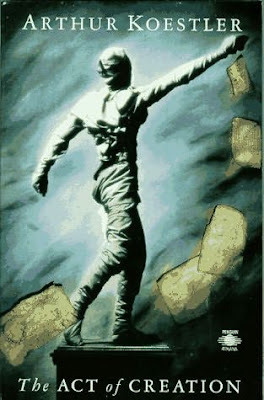 The Act of Creation "..uncovers, selects, re-shuffles, combines, synthesizes already existing facts, ideas, faculties, skills. The more familiar the parts, the more striking the new whole."
The Act of Creation "..uncovers, selects, re-shuffles, combines, synthesizes already existing facts, ideas, faculties, skills. The more familiar the parts, the more striking the new whole." To support his argument, Koestler cites numerous examples of the creative act with the most striking being the notion of how Kekule discovered Benezene when thinking about the Ouroboros.
 "He (Kekulé) said that he had discovered the ring shape of the benzene molecule after having a reverie or day-dream of a snake seizing its own tail (this is a common symbol in many ancient cultures known as the (Ouroboros)."
"He (Kekulé) said that he had discovered the ring shape of the benzene molecule after having a reverie or day-dream of a snake seizing its own tail (this is a common symbol in many ancient cultures known as the (Ouroboros)."Written in 1964, this masterwork remains as relevant today as it did when it originally came out in paperback costing me all of $2.25 because every creative person who reads this will chuckle and nod in agreement about how "creativity just happens, it cannot be forced and comes forth only when it's ready much to the frustration and chagrin of its creator."
Koestler also wrote Darkness At Noon and two other seminal books on science, "The Sleepwalkes", on the contribution of Copernicus, Kepler and Galileo and "The Ghost in the Machine", which contains a critique of behaviorist psychology and Koestler's theory to account for the apparent self-destructiveness of human nature."
"The more original a discovery, the more obvious it seems afterwards."
- Arthur Koestler

No comments:
Post a Comment